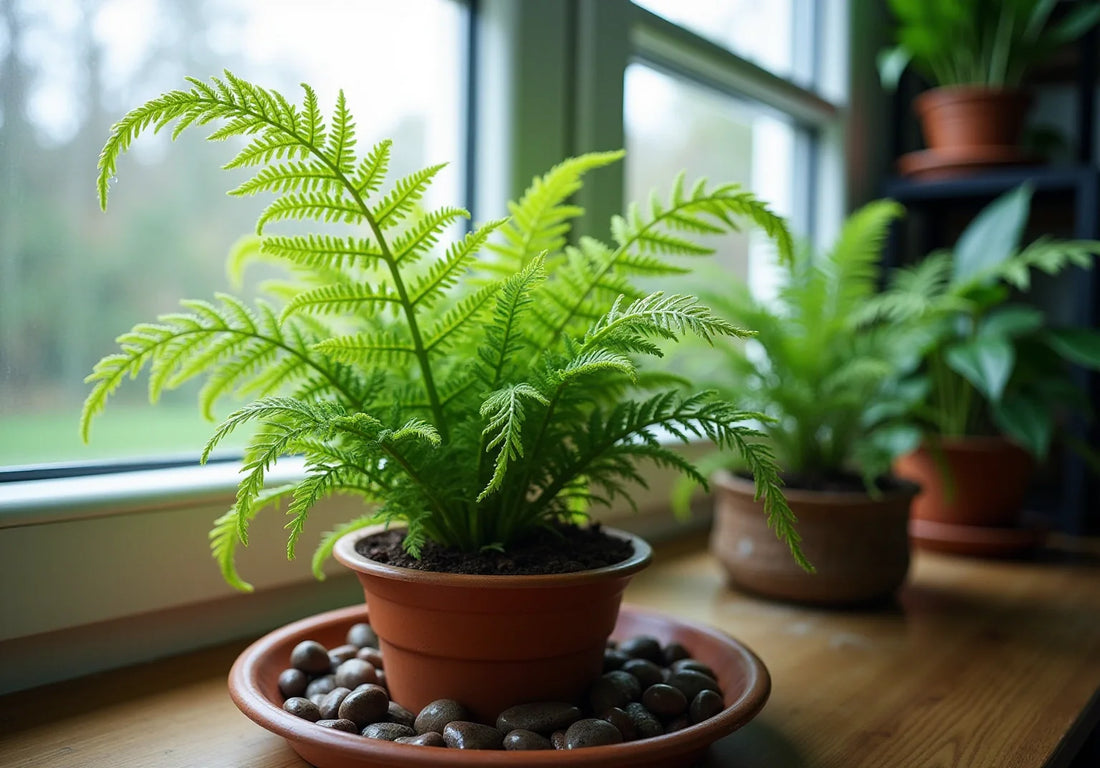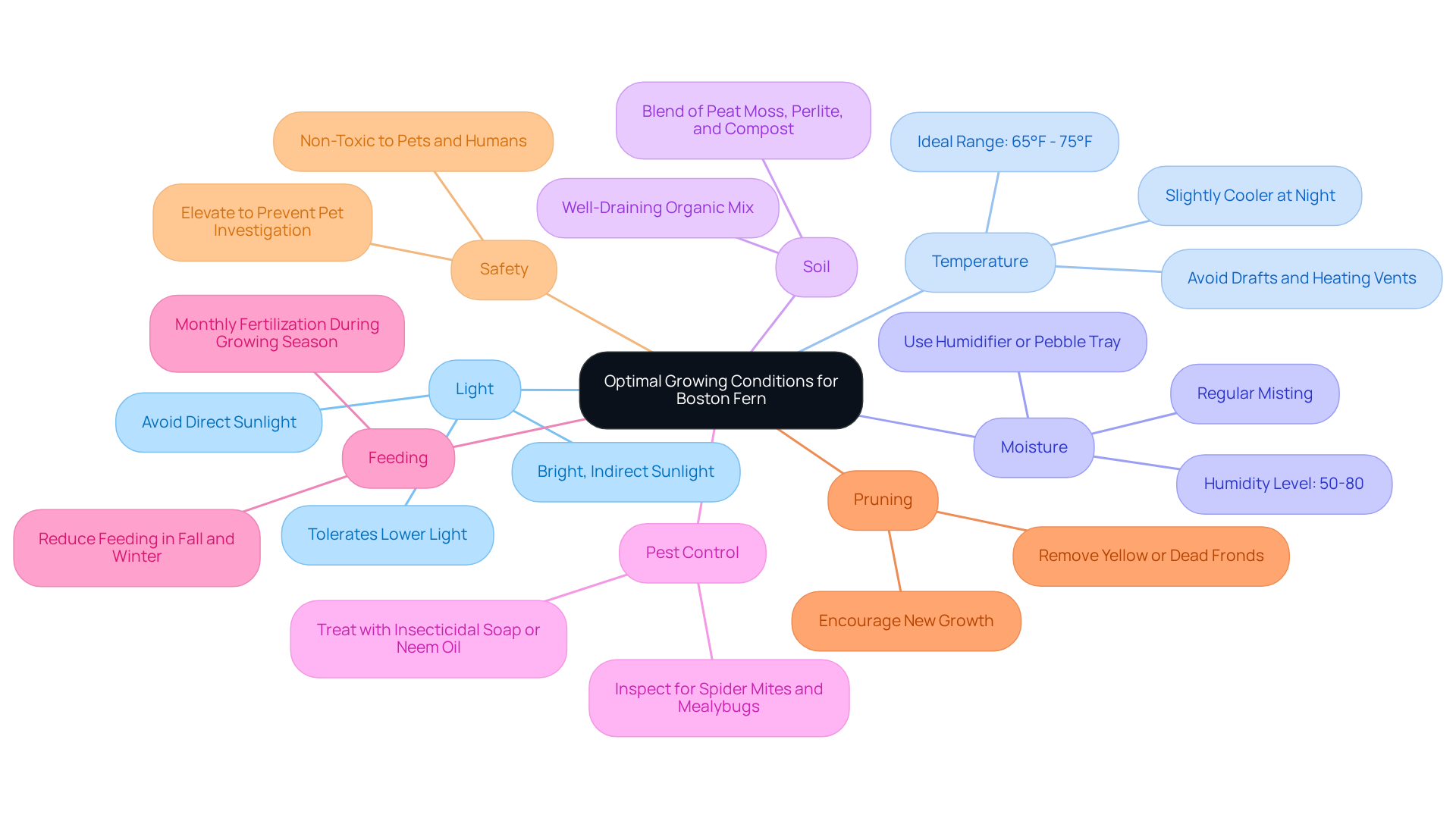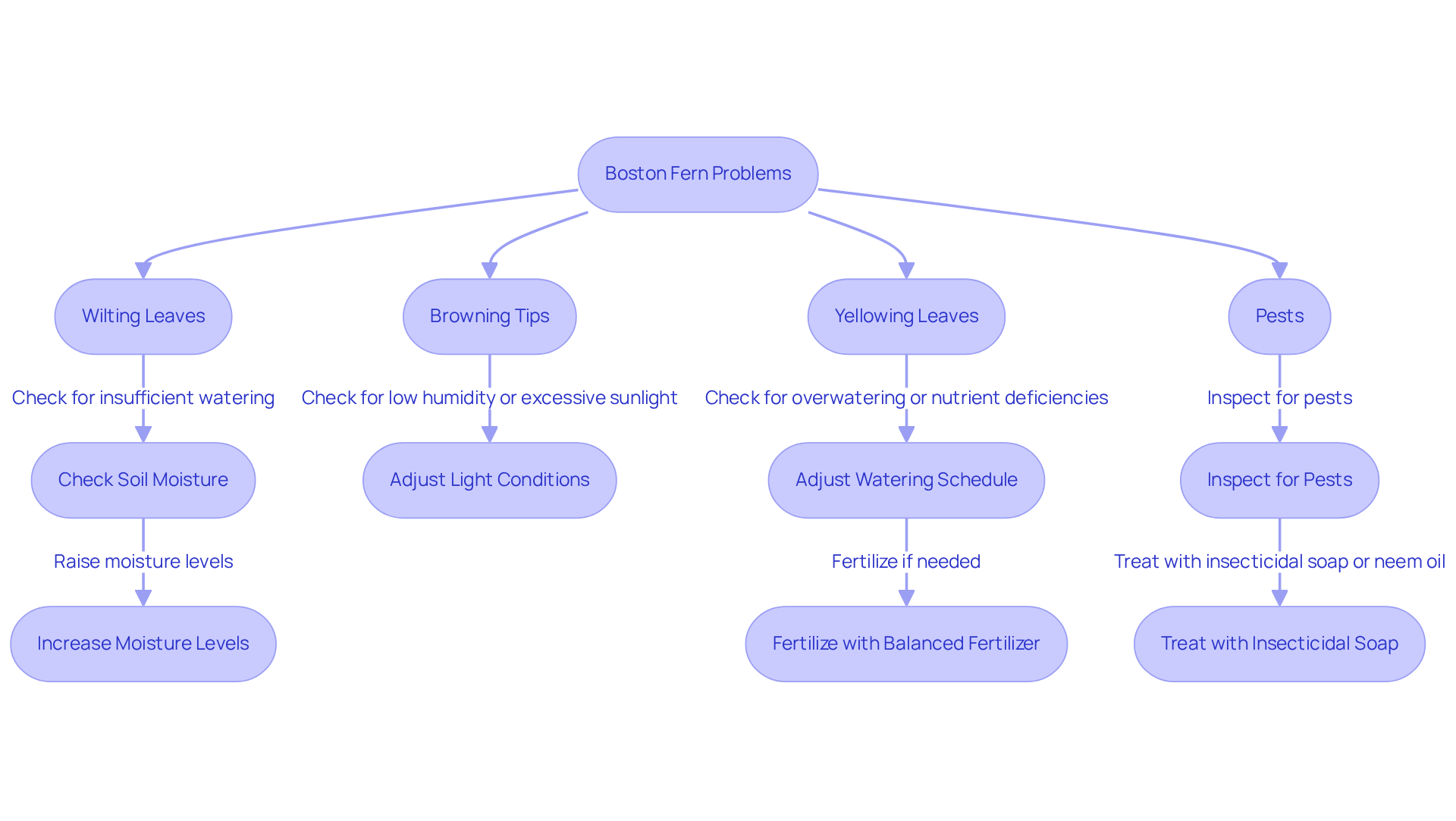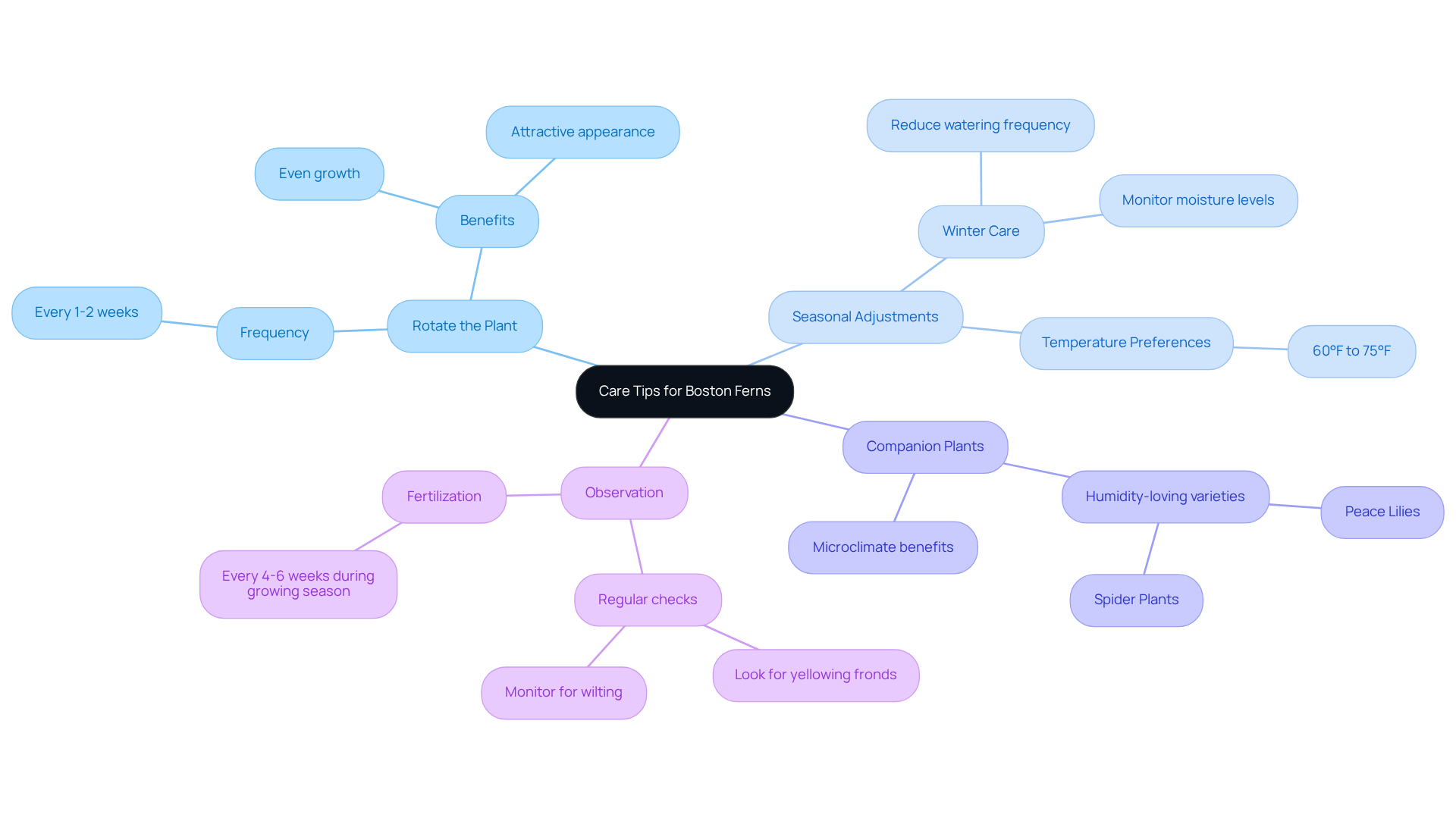
Master Boston Fern Plant Care for Thriving Growth
Share
The Boston fern, characterized by its lush, arching fronds and tropical charm, is a popular choice for indoor gardeners looking to introduce a vibrant touch of greenery to their homes. However, caring for this delicate plant necessitates a comprehensive understanding of its specific needs, including humidity levels and soil composition. When the vibrant leaves begin to wilt or turn brown, it raises concerns about the plant's health. This guide explores essential care practices for Boston ferns, providing insights and solutions to ensure these stunning plants not only survive but flourish in their indoor environments.
🌱 Thinking of growing a Boston Fern plant?
Explore Boston Fern Plant at Everglades Farm - shipped directly from Florida.
Understand Boston Fern Characteristics
The Nephrolepis exaltata, commonly known as the Boston fern, is a lush, evergreen plant renowned for its feathery, arching fronds that can reach lengths of 4 to 6 feet. This tropical beauty thrives in warm, humid environments, making it a popular choice among indoor gardening enthusiasts. In its native habitat, the Boston fern flourishes in shaded areas with high moisture levels, which are crucial for its growth.
To replicate these ideal conditions, it is essential to provide:
- Slightly acidic, well-draining soil that retains moisture without becoming waterlogged.
- Regular watering; the soil should remain consistently moist, and it is advisable to water the plant weekly, particularly when the upper layer of soil feels dry.
- Maintaining humidity levels; when relative humidity drops below 80%, misting the plant or placing it on a tray of damp pebbles can help create a more favorable environment.
The optimal night temperature for these plants is approximately 65ºF, while they can tolerate daytime temperatures as high as 95ºF. It is important to note that dry soil can lead to mortality, so immediate watering is necessary if the soil feels even slightly dry. Understanding these characteristics will enable you to nurture a thriving houseplant, ensuring it remains a vibrant addition to your indoor garden.

2. Establish Optimal Growing Conditions
To establish optimal growing conditions for your Boston fern, adhere to the following guidelines:
- Light: Place your plant in a location that receives bright, indirect sunlight. Direct sunlight can scorch the delicate fronds, so a location near a north or east-facing window is ideal for maintaining lush growth.
- Temperature: Keep the temperature between 65°F and 75°F during the day, with slightly cooler conditions at night. Avoid positioning the plant close to drafts or heating vents, as temperature variations can strain it.
- Moisture: Ferns thrive in elevated moisture levels, ideally between 50-80%. To increase moisture, utilize a humidifier, set the pot on a tray filled with pebbles and water, or mist the fronds regularly to create a suitable environment. Be aware that brown tips on certain ferns can signify low humidity or insufficient watering, so monitor moisture levels closely.
- Soil: Opt for a well-draining, organic potting mix that retains moisture without becoming soggy. A blend of peat moss, perlite, and compost is effective for supporting healthy root development and moisture retention.
- Pest Control: Regularly inspect for typical pests such as spider mites and mealybugs, which can impact the Boston fern plant. If detected, treat them promptly with insecticidal soap or neem oil.
- Feeding: Reduce feeding during the fall and winter months when the plant's growth slows down to prevent nutrient buildup.
- Pruning: Prune any yellow, dead, or damaged fronds as they appear to encourage new growth and maintain a lush appearance.
- Safety: These plants are non-toxic to pets and humans, making them a secure option for homes with children or animals.

3. Implement Care and Maintenance Practices
To ensure your boston fern plant thrives, implementing proper care and maintenance practices is essential.
-
Water your plant thoroughly when the top inch of soil feels dry. During the growing season (spring and summer), these plants generally require watering every 2-3 days. In contrast, during fall and winter, they need watering every 4-7 days. The boston fern plant flourishes in consistently damp soil, but it is crucial to prevent overwatering, which can lead to root decay. Using filtered or distilled water is recommended to avoid chemical buildup from tap water that can harm the plant. Employing a bottom-watering technique can help maintain moisture levels without wetting the fronds directly.
-
Fertilizing is another key aspect of care. During the growing season (spring and summer), fertilize your plant every 4-6 weeks with a diluted liquid fertilizer. A balanced fertilizer with an NPK ratio of 20-10-20 is ideal for promoting healthy growth. For indoor plants, this schedule remains consistent, ensuring they receive the necessary nutrients for vibrant foliage.
-
The boston fern plant thrives in humidity levels between 50% and 80%. Frequent spraying of the leaves can assist in maintaining these humidity levels, particularly in arid indoor settings, enhancing the plant's overall health.
-
Pruning is essential for promoting new growth. Regularly eliminate any dead or yellowing leaves to enhance the plant's appearance and prevent disease by improving air circulation around the foliage.
-
Repotting should occur every 1-2 years or when the plant becomes root-bound. Select a pot that is one size larger and refresh the soil to provide essential nutrients, ensuring the plant has ample space to grow and flourish.
-
Lastly, be aware of the signs of overwatering and underwatering. Symptoms of overwatering include yellowing leaves and droopy foliage, indicating potential root rot. Conversely, underwatering can result in dry, crispy leaves and wilting, signaling a need for additional water.

4. Troubleshoot Common Boston Fern Problems
Despite your best efforts, you may encounter some common issues with your Boston plant. Here’s how to troubleshoot effectively:
If your fern's leaves are wilting, this may indicate insufficient watering or low moisture levels. Insufficient watering leads to dry soil and dehydrated leaves; therefore, it is crucial to monitor the soil moisture and raise moisture levels if needed. Maintaining ambient moisture levels between 50-70% is essential for optimal health.
-
Browning Tips: Browning tips on leaves can suggest low humidity or excessive direct sunlight. Direct sunlight can damage Boston plant leaves, resulting in browning and loss of texture. Ensure the plant is positioned in an appropriate spot with bright, indirect illumination to avoid leaf damage.
-
Yellowing Leaves: Yellowing leaves can result from overwatering or nutrient deficiencies. Overwatering can cause root rot, which is characterized by a foul smell and blackened roots. Adjust your watering schedule to keep the soil evenly moist but not soggy, and consider fertilizing with a balanced liquid fertilizer during the growing season.
-
Pests: Common pests include mealybugs and spider mites. Regularly inspect the undersides of fronds and treat infestations with insecticidal soap or neem oil. Soil drenches with insecticides are a more effective control method for pests. Maintaining humidity through regular misting can also deter pests and promote a healthier environment for your plant.

5. Additional Care Tips for Boston Ferns
To ensure your Boston fern thrives, consider these essential care tips:
-
Rotate the Plant: To promote even growth, rotate your houseplant every 1-2 weeks. This practice ensures that all sides receive adequate light exposure, preventing uneven growth. Gardening expert Reese L. Robins emphasizes that this method helps maintain an attractive and well-balanced appearance indoors.
-
Seasonal Adjustments: In winter, reduce watering frequency as the plant's growth slows. It is crucial to monitor moisture levels carefully, particularly in warm indoor environments, to avoid stress. The Boston fern plant flourishes in conditions where humidity levels are no less than 50% and prefers consistent temperatures ranging from 60°F to 75°F.
-
Companion Plants: Position your Boston fern plant next to other humidity-loving varieties, such as peace lilies or spider plants. This arrangement creates a microclimate that enhances moisture levels, benefiting all plants involved.
-
Observation: Regularly check your plant for any changes in appearance. Early detection of issues like yellowing fronds or wilting can significantly improve recovery chances and overall health. Additionally, fertilize your Boston fern plant every 4-6 weeks during the growing season, from spring through summer, to replenish nutrients in the soil.

Conclusion
Mastering the care of Boston ferns not only enhances their growth but also enriches indoor spaces with their lush, vibrant foliage. Understanding the unique characteristics of the Nephrolepis exaltata is crucial for creating the right environment that mimics its native habitat. By providing adequate moisture, light, and temperature, these beautiful plants can thrive and become a stunning centerpiece in any home.
This guide has discussed essential aspects of Boston fern care, including:
- Optimal growing conditions
- Watering practices
- Pest management
- Troubleshooting common issues
Maintaining humidity levels, using well-draining soil, and regularly inspecting for pests are key to ensuring the health and vitality of your fern. Additionally, implementing seasonal adjustments and nurturing practices, such as rotating the plant and companion planting, can significantly enhance its growth.
In conclusion, nurturing a Boston fern requires attention to detail and a commitment to understanding its needs. By following the outlined care tips, any gardener can cultivate a thriving Boston fern that not only beautifies the home but also contributes to a healthy indoor environment. Embrace the journey of plant care, and enjoy the lush greenery that a well-cared-for Boston fern brings into your life.
🌱Transform Your Space with Lush Boston Ferns!
Start your journey to vibrant greenery today and enhance your indoor environment effortlessly.
🛒 Buy Boston Fern Plant
👉🏻 Explore all indoor plants for sale
Frequently Asked Questions
What is the Boston fern and what are its characteristics?
The Boston fern, scientifically known as Nephrolepis exaltata, is an evergreen plant recognized for its feathery, arching fronds that can grow 4 to 6 feet long. It thrives in warm, humid environments and prefers shaded areas with high moisture levels.
What are the ideal soil conditions for growing a Boston fern?
Boston ferns require slightly acidic, well-draining soil that retains moisture without becoming waterlogged.
How often should I water my Boston fern?
The soil should remain consistently moist, and it is advisable to water the plant weekly, especially when the upper layer of soil feels dry.
How can I maintain humidity for my Boston fern?
To maintain humidity, mist the plant or place it on a tray of damp pebbles, particularly when relative humidity drops below 80%.
What is the optimal temperature range for a Boston fern?
The optimal night temperature for Boston ferns is around 65ºF, while they can tolerate daytime temperatures as high as 95ºF.
What light conditions are best for a Boston fern?
Place the Boston fern in bright, indirect sunlight. Locations near north or east-facing windows are ideal, as direct sunlight can scorch the fronds.
What moisture levels are ideal for Boston ferns?
Boston ferns thrive in moisture levels between 50-80%. Regular misting or using a humidifier can help achieve these levels.
What type of soil mix is recommended for Boston ferns?
A well-draining, organic potting mix that retains moisture is recommended. A blend of peat moss, perlite, and compost is effective for supporting healthy root development.
How can I manage pests on my Boston fern?
Regularly inspect for pests like spider mites and mealybugs. If detected, treat them promptly with insecticidal soap or neem oil.
Should I fertilize my Boston fern year-round?
It is advisable to reduce feeding during the fall and winter months when the plant's growth slows down to prevent nutrient buildup.
How should I care for damaged fronds on my Boston fern?
Prune any yellow, dead, or damaged fronds as they appear to encourage new growth and maintain a lush appearance.
Are Boston ferns safe for pets and children?
Yes, Boston ferns are non-toxic to pets and humans, making them a safe option for homes with children or animals.


